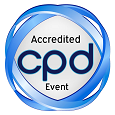
Ting-Chao Chou
PD Science LLC, USA
Title: Design of anti-viral cocktails with combination index-polygonogram method using CompuSyn simulation
Biography
Biography: Ting-Chao Chou
Abstract
Quantitative determination of synergism or antagonism with the combination index theorem of Chou-Talalay and automated CompuSyn simulation has been used for anti-viral and anti-cancer drug combination studies in over 10,000 scientific papers. Over 98% of them have been 2-drug combinations in vitro. In this paper, the co-originator of the combination index (CI) method and the co-author of the CompuSyn software, will illustrate step-by-step how to design anti-HIV cocktails with 2 to 5 drug combinations in vitro using polygonogram for maximal synergy. For example, A, B, C, D and E anti-HIV agents, we can quantitatively determine the ranks of synergy of each pairs (e.g., A+B, B+C, C+D, A+C, A+D and B+D, A+E, B+E,... for lines); of each triplets (e.g., A+B+C, B+C+D, A+B+D and A+C+D, A+C+E,... for triangles); of each quartets (e.g., A+B+C+D, B+C+D+E,... for the square/rectangulars) and for all 5 drugs for the pentagon. Not all 26 possible combinatory combinations for 5 drugs need to be carried out, depending on the need. The polygonogram concept was introduced in 1994-98 by Chou TC and Chou J.H. It was designated that synergy is presented in solid red color and antagonism is presented in broken green color, for each line, triangle, rectangular and pentagon, the strength of synergism or antagonism is graded by the thickness of the solid red lines/shapes or the broken green lines/shapes. Actual experiments revealed the following findings: Polygonogram allows simple visual inspection to instantly conclude which combos yield greater synergism over others within many complicated massive amount of data and conclusions; combination with more drugs not necessarily yield more synergy; synergism or antagonism need to be determined experimentally and not to be predicted by drug mechanisms; it is possible to approximately or semi-quantitatively project the rank of synergism or antagonism of different triangles or squares/regctangulars, even prior to carrying out the actual experiments, using the components combos. It is concluded that the CI-Polygonogram provide simple, efficient and quantitative solutions to complicated drug combinations (including cocktails) with computerized automated simulations or constructions with sound theoretical basis and thus warrant important applications in pharmaceutical R&D. The currently in use anti-HIV or anti-cancer cocktails/combos, approved by Patent Office/FDA, are not necessarily represent the best/optimal combinations with maximal synergy, however, many of them have acclaimed multi-billion dollar revenues; synergy claims have become not only the scientific and regulatory issues but also the legal/litigation issues, that need a consensus to avoid the damaging consequences.

